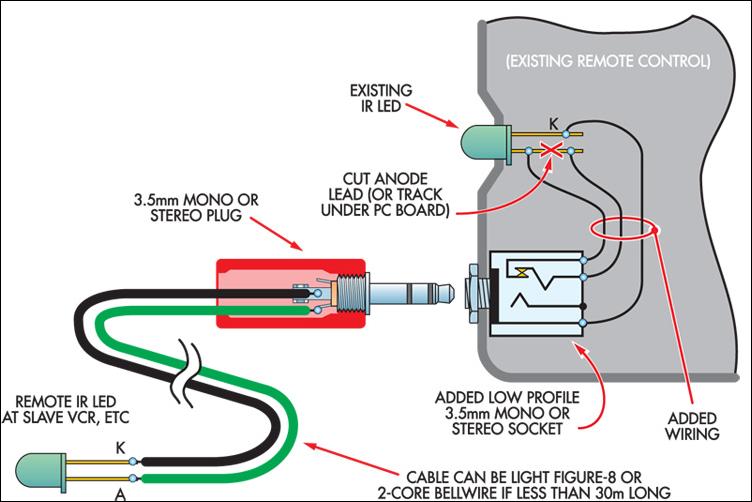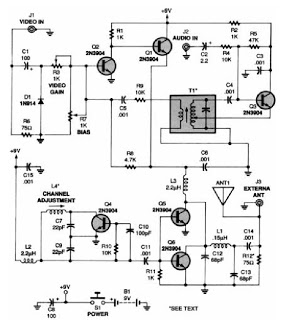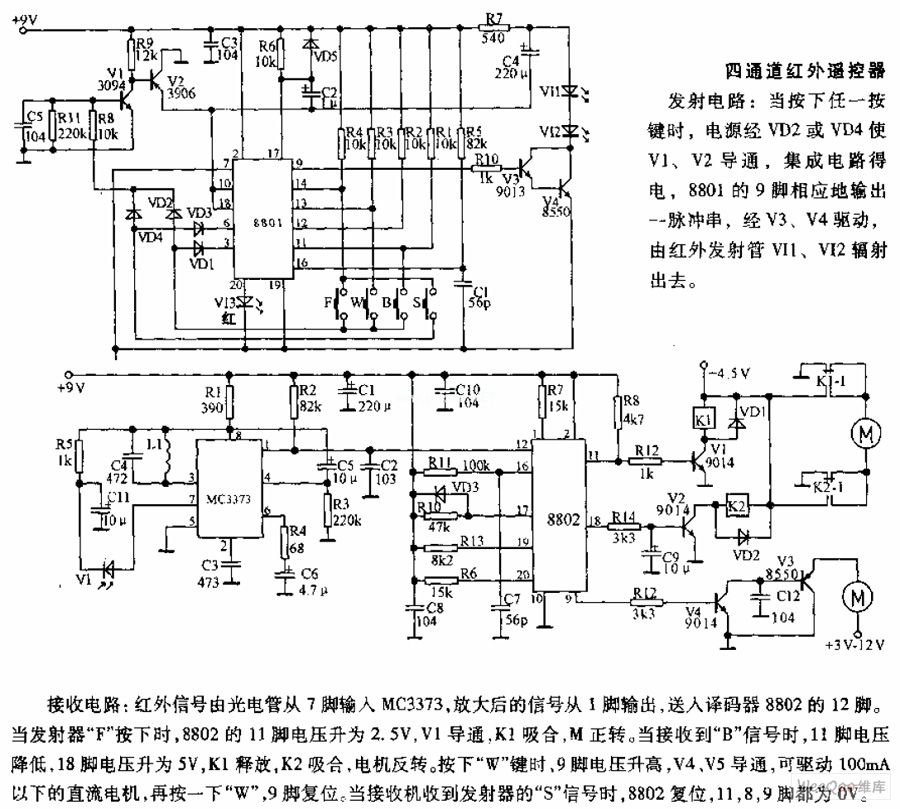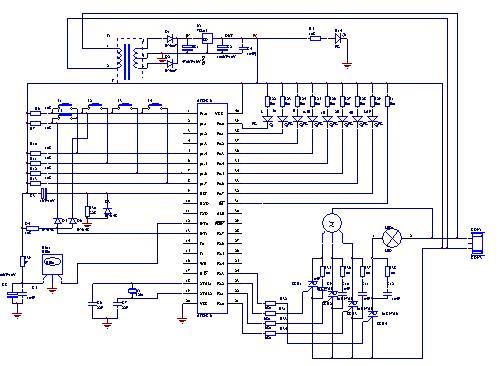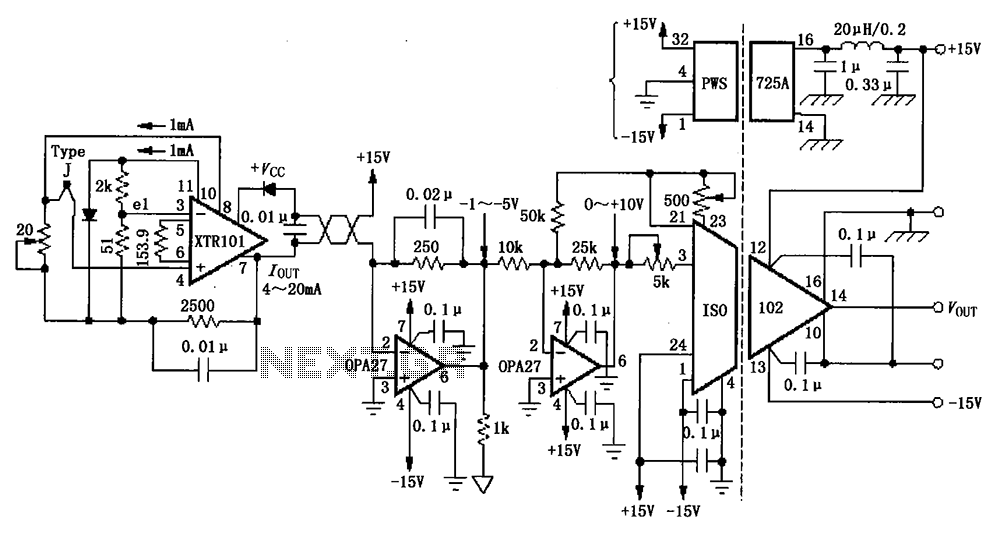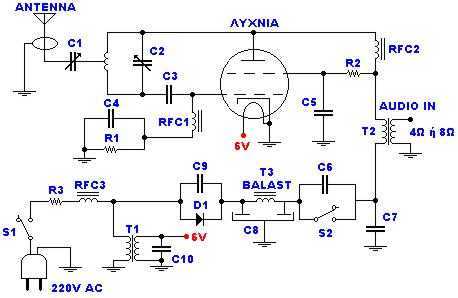
DTMF INFRARED TRANSMITTER
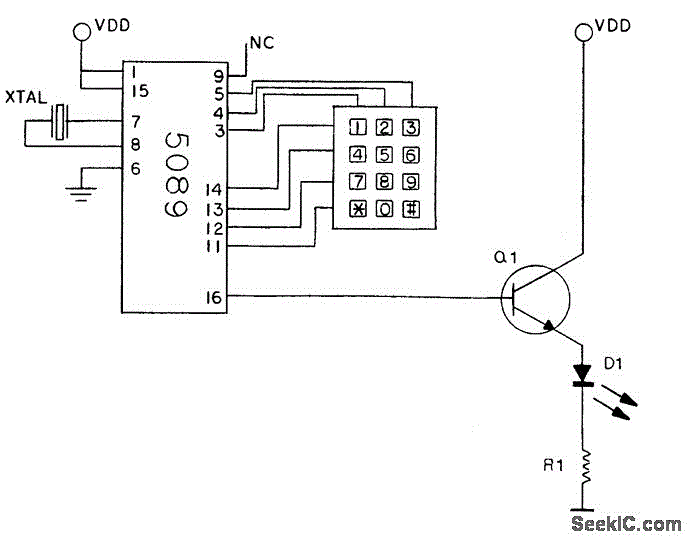
This transmitter utilizes a 5089 DTMF generator chip along with a keypad to produce DTMF signals, which are then modulated onto an infrared (IR) light beam emitted from an IR LED. The circuit employs a 3.579-MHz TV burst crystal as its frequency reference.
The circuit design incorporates several key components to function effectively. The 5089 DTMF generator chip is responsible for generating Dual-Tone Multi-Frequency (DTMF) signals, which are commonly used in telephone systems for signaling. The keypad serves as the user interface, allowing the operator to input the desired DTMF tones, which correspond to the buttons pressed.
The generated DTMF signals are then fed into a modulator circuit that modulates these audio frequencies onto an IR light beam. The modulation technique typically used in this application is amplitude modulation (AM), where the intensity of the IR LED is varied according to the DTMF signal. This modulation allows the transmitted signals to be sent over a distance using infrared light, which is particularly useful in remote control applications and wireless communication systems.
The 3.579-MHz crystal oscillator provides a stable clock signal necessary for the operation of the DTMF generator. This frequency is commonly used in television applications and ensures that the DTMF tones are generated accurately and consistently.
In summary, this transmitter circuit combines a DTMF generator, a keypad for user input, an IR LED for transmission, and a crystal oscillator for timing, resulting in a compact and efficient means of transmitting DTMF signals over infrared light. This design can be utilized in various applications, including remote controls and wireless communication systems, where the transmission of DTMF signals is required.This transmitter uses a 5089 DTMF generator chip and a keypad to generate DTMF signals and modulate them on an IR light beam from an IR LED. Xtal is a 3.579-MHz TV burst crystal.. 🔗 External reference
The circuit design incorporates several key components to function effectively. The 5089 DTMF generator chip is responsible for generating Dual-Tone Multi-Frequency (DTMF) signals, which are commonly used in telephone systems for signaling. The keypad serves as the user interface, allowing the operator to input the desired DTMF tones, which correspond to the buttons pressed.
The generated DTMF signals are then fed into a modulator circuit that modulates these audio frequencies onto an IR light beam. The modulation technique typically used in this application is amplitude modulation (AM), where the intensity of the IR LED is varied according to the DTMF signal. This modulation allows the transmitted signals to be sent over a distance using infrared light, which is particularly useful in remote control applications and wireless communication systems.
The 3.579-MHz crystal oscillator provides a stable clock signal necessary for the operation of the DTMF generator. This frequency is commonly used in television applications and ensures that the DTMF tones are generated accurately and consistently.
In summary, this transmitter circuit combines a DTMF generator, a keypad for user input, an IR LED for transmission, and a crystal oscillator for timing, resulting in a compact and efficient means of transmitting DTMF signals over infrared light. This design can be utilized in various applications, including remote controls and wireless communication systems, where the transmission of DTMF signals is required.This transmitter uses a 5089 DTMF generator chip and a keypad to generate DTMF signals and modulate them on an IR light beam from an IR LED. Xtal is a 3.579-MHz TV burst crystal.. 🔗 External reference
